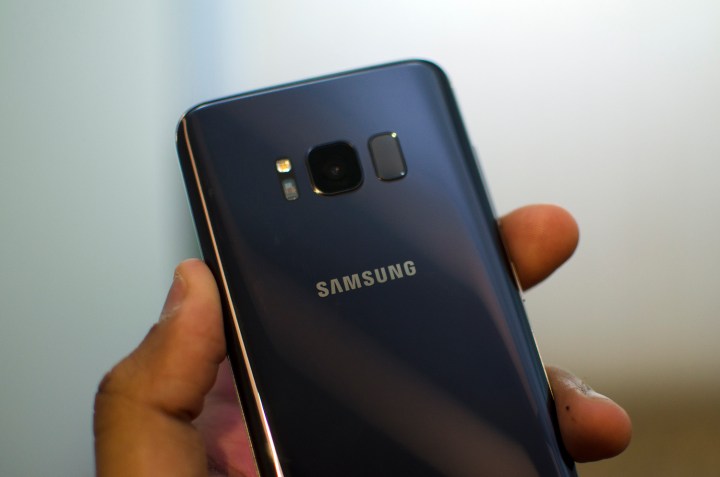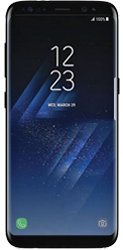
The South Korean tech giant needed to hit it out of the park with this year’s flagship, and so it took its time, neglecting to reveal the
But last year’s Galaxy was no slouch either, and although the S8’s exterior certainly fits the revolutionary bill, it remains to be seen if Samsung’s latest boasts enough meaningful improvements to necessitate an upgrade — especially when the S7 can be had for significantly less after a year on the market. How do they compare? We put them head-to-head to find out.
Specs
Samsung Galaxy S7 |
Samsung
|
|
| Size | 142.4 x 69.6 x 7.9 millimeters (5.61 x 2.74 x 0.31 inches) | 148.9 x 68.1 x 8.0 mm (5.86 x 2.68 x 0.31 inches) |
| Weight | 5.36 ounces (152g) | 5.47 ounces |
| Screen | 5.1-inch Quad HD Super AMOLED | 5.8-inch Quad HD Super AMOLED |
| Resolution | 2,560 x 1,440 pixels | 2,960 x 1,440 pixels |
| OS | Android 6.0 Marshmallow (Upgradeable to 7.0 Nougat) | |
| Storage | 32/64GB | 64GB |
| MicroSD card slot | Yes | Yes |
| NFC support | Yes | Yes |
| Processor | Qualcomm MSM8996, Snapdragon 820 (U.S.) Samsung Exynos 8890 (International) |
Qualcomm MSM8988, Snapdragon 835 (U.S.), Exynos 8895 (International) |
| RAM | 4GB | 4GB |
| Connectivity | Wi-Fi, 4G LTE, GSM, HSPA+ | Wi-Fi, 4G LTE, HSPA+ |
| Camera | Front 5MP, Rear 12MP with OIS | Front 8MP, Rear 12MP with OIS |
| Video | 2,160p 4K UHD | 2,160p |
| Bluetooth | Yes, version 4.2 | Yes, version 5.0 |
| Fingerprint sensor | Yes | Yes |
| Other sensors | Accelerometer, gyro, proximity, compass, barometer, heart rate | Accelerometer, gyro, proximity, compass, barometer, heart rate, iris scanner |
| Water resistant | Yes, IP68 | Yes, IP68 |
| Battery | 3,000mAh | 3,000mAh |
| Ports | Micro USB, 3.5mm headphone jack | USB Type-C, 3.5mm headphone jack |
| Quick Charging | Yes | Yes |
| Wireless Charging | Yes, Qi and PMA | Yes, Qi and PMA |
| Marketplace | Google Play Store | Google Play Store |
| Color offerings | Black, white, gold, silver | Black, silver, Orchid Gray (U.S. Models), Blue, gold (International models) |
| Availability | AT&T, Verizon, Sprint, T-Mobile | AT&T, Verizon, Sprint, T-Mobile, Samsung |
| Price | $570 | Starting at $720 |
| DT review | 4 out of 5 stars | First take |
In the U.S., the
Whichever S8 you buy, it’ll be capable of seriously fast download speeds over LTE — up to 1,000Mbps to be exact. Carriers will soon begin rolling out their gigabit-class LTE networks in limited capacities, and — unlike the S7 — the S8 is future-proof with the necessary hardware to take advantage of the new infrastructure as it proliferates over the next several years.
The
In terms of memory, the S8 retains the 4GB
The added processing power, future-proofed LTE connectivity, and greater stock storage make the
Winner: Samsung
Design and display

Just as the Galaxy S7 featured a Quad HD Super AMOLED panel, so too does its successor. But that doesn’t mean they share the same resolution — the S8 has a slightly higher 2,960 x 1,440 pixel resolution. That difference is due to size and the Edge display, which both the S8 and S8 Plus utilize.
The S7 offers a 5.1-inch screen, whereas the S8 has a much bigger 5.8-inch curved screen. While that may sound too big, the
Otherwise, these phones look pretty similar along the sides and the back, right down to the materials. Samsung’s trademark polished glass cloaks the rear of the S8, surrounded by a ring of aluminum.
The screen really is the differentiating factor between the design of both models. The wider, 18:5:9 aspect ratio on the S8 lets you view more content, potentially making multitasking easier.
As long as you can put up with the fingerprint sensor moving to the back, the S8’s luxurious display and astonishing screen-to-bezel ratio makes for a device that is simultaneously more useful and aesthetically pleasing than the one it replaces.
Winner: Samsung
Battery life and charging

The
The Snapdragon 835’s 10nm manufacturing process also makes it a bit smaller than the 14nm chip featured in last year’s Galaxy S7, leading to a 25 percent reduction in power consumption, according to Qualcomm. All of these tweaks should help keep the S8 up and running for longer on a charge than the outgoing flagship, despite the size of the battery remaining unchanged.
When we reviewed the S7 last year, we found its battery life to be satisfactory — if a little unimpressive — and averaged a little more than a day of use. A more frugal processor and improved Quick Charge capabilities mean Samsung’s latest is likely to eclipse that benchmark.
Winner: Samsung
Camera, software, and price
Camera

The
Samsung has added auto-focus to the S8’s selfie cam, making it easy to capture a group photo. While improvement of the primary camera appears to be more iterative this year, the front-facing camera boasts clear enhancements that make the S8 the more versatile option in everyday use.
Winner: Samsung
Software
Samsung began the roll out of
Samsung is pitching
Ultimately, we’re not sure useful
Winner: Samsung
Price and availability
The
Samsung is demanding a premium for this year’s flagship, making it one of the more expensive smartphones on the market today. While the S8’s display and design have been vastly improved, the practical benefits aren’t quite so clear, as the S7 was already a smooth-performing, powerful device.
Keeping that in mind, the S7 can be had for far less — just $570 direct from Samsung, and a couple bucks more from the carriers. Amazon is even selling the phone right now for $430. If you’re not that smitten with the S8’s looks, the S7 is an excellent alternative.
Winner: Samsung Galaxy S7
Overall winner: Samsung Galaxy S8
After seven iterations of Samsung’s boundary-pushing smartphone — some less significant steps forward than others — the
The
Article originally published on 03-30-2017 by Adam Ismail. Updated on 04-25-2017: Updated
Editors' Recommendations
- Best Samsung Galaxy S24 deals: Save up to $800 on the phone
- The best Samsung Galaxy S23 cases in 2024: our 19 favorites
- There’s something Samsung didn’t tell you about the Galaxy S24
- Samsung’s Galaxy Tab S9 may get a feature the iPad has never had
- Samsung brings the Galaxy S23’s new software to older phones




